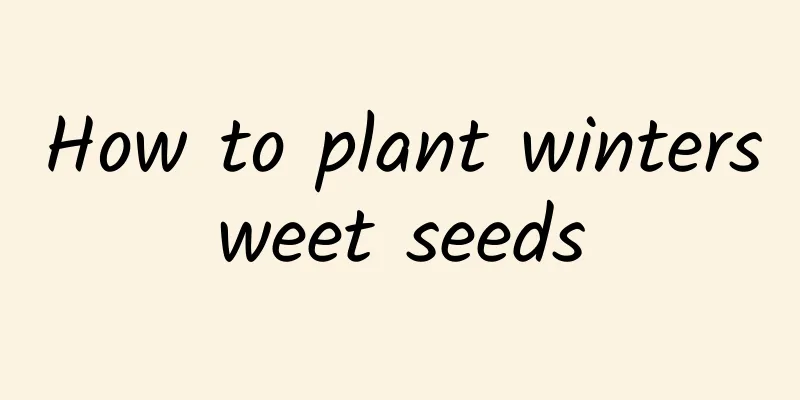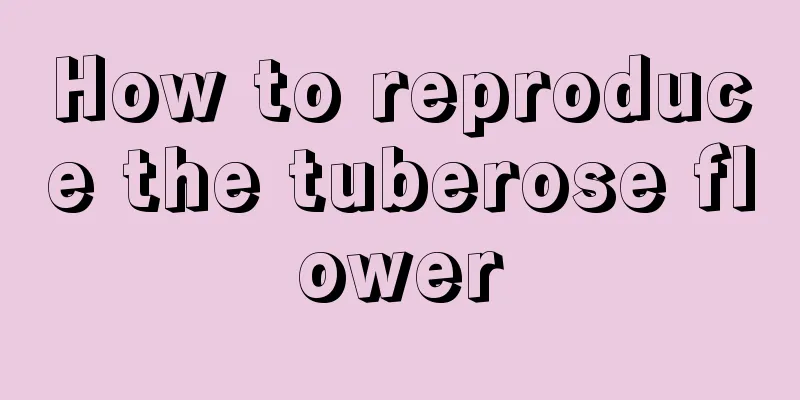With just a few clicks of scissors, your flowers will grow quickly and vigorously!

1. ToppingPinching is actually topping, which is mainly to promote the branching of flowers and plants, forming a plump plant shape, avoiding the flowers and plants from growing into "bare branches" in the end, increasing the amount of branches and leaves, and at the same time it can also promote the formation of flower buds, allowing the plants to bloom more and more densely! Topping method: When the grass flowers grow to four or five centimeters high, the top buds of the branches can be removed. (Author: Not Enough Time Source: Walking on Flowers) When the apical bud is removed, the plant will sprout side branches, promoting the differentiation of lateral buds. (Author: Not Enough Time Source: Walking on Flowers) 2 ThinningWhen the branches grow too densely, or there are crossed branches, horizontal branches, or inward branches, we need to prune them in time. Pruning overcrowded branches Cut off overlapping branches (Image by: xlm4554 Source: Jasmine Bar) Cut off parallel branch B Cut off the long branches (Photo by: Yueying Youzhu Source: Jasmine Bar) Prune away weak branches (Photo by: KGC Dachengzi Source: Gardenia Bar) 3 Thinning buds and picking withered flowersWhen there are too many flower buds, cut off the excess buds in time and leave only the main buds to ensure sufficient nutrient supply, which can make the flowers bloom bigger and brighter. Remove the side buds and keep the main buds (Photo by: Dboy Public Enemy Source: Rose Bar) Remove excess flower buds to ensure adequate nutrients. 4 ShortWhen the plant grows too tall and does not produce side branches, it is necessary to shorten the plant from one-third to one-half of the main stem to promote the sprouting of side branches. The best time for pruning is generally spring. After the short cut 5. Root PruningFast-growing flowers need to be repotted every one or two years. When repotting, you must repair the root system in time so that the plants can grow better. Prune diseased roots (Rose nodule) When giving plants pots, carefully check the growth of the roots. If you find any abnormalities, cut them off in time and remove them completely. Prune rotten roots (Photo by zhangtr1, source: Orchid Bar) If plants are watered too much and water accumulates in the soil for a long time, it can easily lead to root rot. When repotting these plants, the rotten roots should be trimmed off to prevent further infection. Pruning adventitious roots (Photo source: Suzhou Evening News) In order to grow, flowers will always grow many tiny roots. When repotting, some of these tiny roots need to be cut off to promote the germination of new roots. Prune tangled roots (Photo by Xiaoping Chaoren Source: Osmanthus Bar) For potted plants, due to the limited space in the pots, if they are not potted in time, the roots of the plants will become tangled and cannot grow normally. If this happens in the pots, you need to carefully clean the roots, prune them appropriately and then replant them. Flower friends, have you learned it? |
<<: Management methods of Koelreuteria paniculata seedlings
>>: How to grow the Fire Festival
Recommend
How to make Kirin Palm alive by cuttings? Cutting methods and precautions
Kylin palm can be propagated by sowing and cuttin...
How does the trunk of the Osmanthus fragrans grow thicker?
1. Plenty of sunlight If you want the trunk of th...
Six trees that protect your home and bring wealth
1. Pomegranate Tree The pomegranate tree is a ver...
Is wax apple a fruit or a vegetable?
Is wax apple a fruit or a vegetable? Wax apple is...
What to do if the leaves of Clivia are very thin
1. Insufficient light There is an old saying that...
How often should I water the fortune tree?
How often should I water my fortune tree? General...
How to store leeks to keep them fresh? How to store leeks for a long time?
1. Keep fresh in the refrigerator You can put the...
What to do if you water Monstera too much
Overwatering Monstera Too much watering of Monste...
What flowers are suitable for growing in Tonghua? What are the city flowers and trees?
1. Climate characteristics of Tonghua Tonghua has...
Can insect repellent be placed indoors?
1. Can be placed indoors Insect repellent can be ...
What are the effects of spider plants?
1. Relieve high fever The whole plant can be used...
These 6 kinds of flowers are super frost-resistant and will bloom in the winter and stay in bloom for two months!
Cyclamen Lowest cold-resistant temperature: 0℃ Fl...
What fertilizer should be used to make the leaf fairy grow well and fast (what fertilizer should be applied to make the roots of the leaf fairy grow strong)
What fertilizer does Yexian need to grow fast? Le...
Plant flowers all over the house, so why worry about smog?
living room bedroom balcony kitchen bathroom stud...
What is the method of planting pomegranate potted plants? Can pomegranate seeds be planted in small pots?
1. Can pomegranate seeds be planted in small pots...









